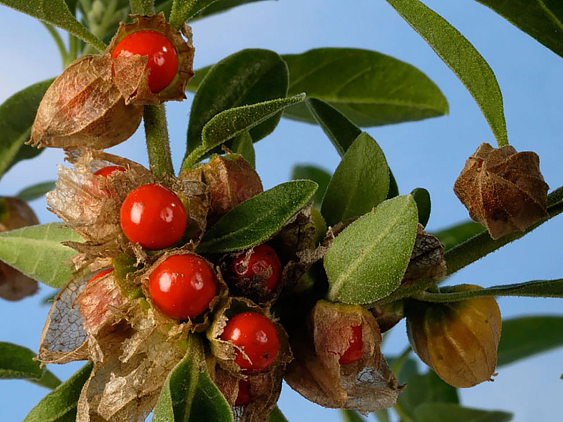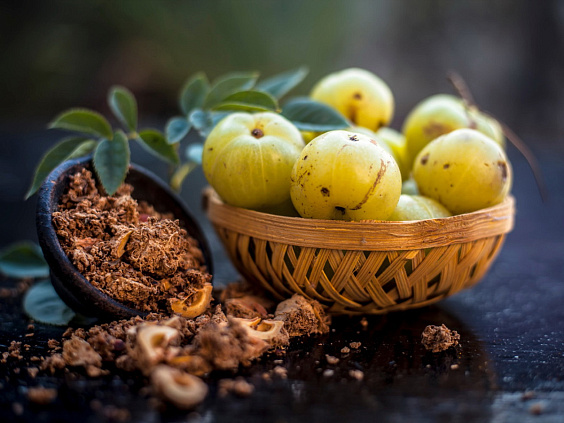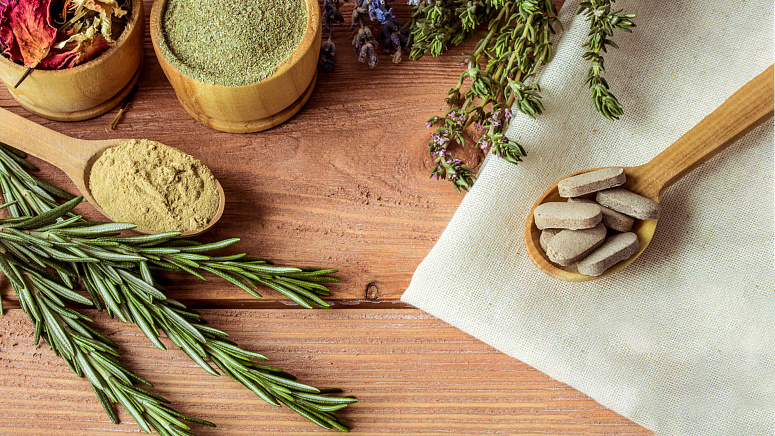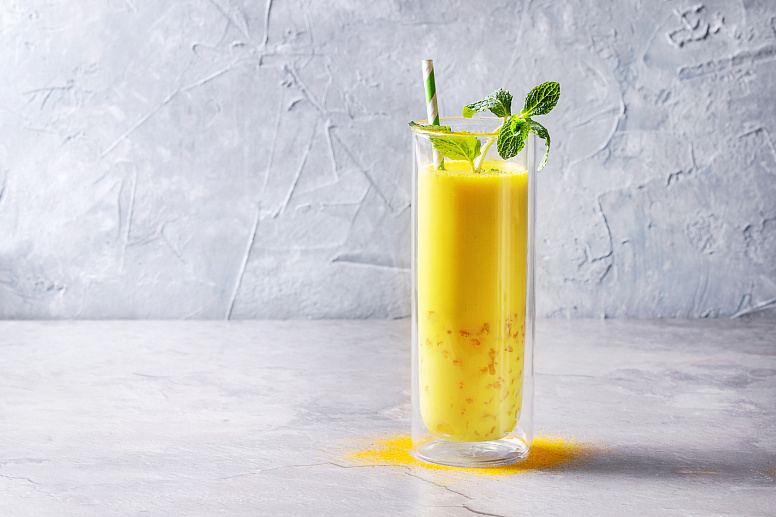When it comes to medicines, the most important characteristics for us are their efficacy, selectivity, precision and safety. In their pursuit, both traditional and modern medicine have a wide range of med-icines at their disposal, which differ in the form of preparation and effect. The majority of Ayurvedic medicines have precise pharmaceutical formulations, which, in some cases, have been passed down and performed for centuries following the recommendations of original sources with great precision. In this article we will focus on types and forms of medication that Ayurveda can offer.
Types of medicines
Ayurvedic treatment can be divided into two categories according to the effects of medicine being used.
- Detoxication (shodhana). During this type of treatment the following medicines can be prescribed: Gandharvahastadi Tailam, Anu Thailam, Triphala Triphala Churna.
- Pacification (shamana). Medicines: Mahanarayana Thailam, Ksheerabala Thailam, Dhanwantharam Thailam.
These types of treatments are based on the abilities of certain agents to influence the doshas, balance them (soothing effect), or remove excess substances (detoxication effect).
We can also classify Ayurvedic medicines according to the number of components:
- Mono remedies consist of a single component. Among themAmalaki, Brahmi, Neem, Haritaki and ot-hers.
- Multi-ingredient remedies consist of several herbs or other ingredients. Among such medicines are — Avipattikar Churna, Trikatu Churna, Chyavanprash and others.
Multi-ingredient medicines are classified based on the main “carrier” ingredient. In order to make rem-edies more effective, we need a conductive substance, or carrier - (anupana), which helps to deliver active ingredients and absorb them. From the Ayurvedic standpoint, the most valuable products are as follows: sesame oil (especially for vata dosha), ghee (for pitta dosha), honey (for kapha dosha).
According to their basic component, the following types of Ayurvedic medicines are recognised:
- Thailas (Thailams). It is a category of medicines that are based on oils. The most popular base oil is sesame oil but there are also others. Thailams can be classified as follows: Valiya, Kera and Kuzhambu. Valiya formulations are based on clarified butter ghee that is over 12 months old. Kera compositions consist of a combination of coconut and sesame oils. Kuzhambu is a mixture of ghee, sesame oil and castor oil. Thailams are intended for both external and internal use. In addition, they are used for instillation in the eyes, nose and ears, and for different procedures such as basti, gandusha. Apart from oils, such herbaceuticals contain a lot of other herbal compo-nents. Several examples of these medicines are Bala thailam, Brahmi thailam, Valiya Sahacharadi thailam, Eladi Kera thailam, Arimedadi thailam, Elaneer Kuzhambu.
- Ghritas or Grithams.These remedies are primarily based on ghee, which is combined with medicinal herbs, and some include honey as well. When cooled, they have a consistency akin to ointment; when heated, they turn into a jam-like substance and eventually become liquid. They are primarily used for internal use to achieve deep detoxification and to stimulate the activity of internal organs. Examples of these preparations are: Triphala Ghritam, Phalasarpis Ghritam , Shatavaryadi Ghritam.
- Guggul. “Pharmaceutical” prep-arations in tablet form that include guggul resin from the balm tree. These are designed to treat arthri-tis, obesity, nervous system disorders, and skin diseases. The most recognised products are: Yogaraja guggul, Triphala guggul, Kanchnar guggul.
Forms of Ayurvedic medicines
The dosage form is the appearance of a remedy intended for a specific method of using the product. The active ingredient may be the same, while the form of the product can be different. This helps im-prove absorption and bioavailability, achieving quick and lasting results.
- Swarasa is a freshly squeezed juice. Various parts of plants (roots, stems, leaves, fruits) can be used to make it. Vegetable and fruit juices are widely popular, also Aloe Vera juice. In compar-ison with other forms of medicines, fresh juices have the highest concentration of active agents. Juic-es are recommended when the disease is progressing.
- Hima or cold water infusion.This form is applicable to plants with a cooling effect and, therefore, is suitable for correcting conditions with elevated pitta. Hibiscus is infused this way along with jasmine, mint, and coriander. Fresh plants could be used to make cold water infusions but it is more effective to use dry herbs and powders for such purposes. Pour cold water over the chosen ingredients and soak the substance for at least 1 hour, although it is much better to let it sit overnight (8–12 hours).
- Phanta or hot water infusion. Herbs are steeped in hot water, then infused, strained, and used immediately after preparation .
- Kashaya (kashayam) - water based extract.It is prepared from coarsely ground plant ma-terials, making it easy to separate the decoction afterward. The powder is covered with cold or hot wa-ter (depending on the intended purpose of the Ayurvedic preparation), then evaporated and strained. Examples of prepared decoctions include: Drakshadi Kashayam, Kokilaksha Kashayam.
- Churnas - fine powder.This preparation is a fine powder made of one or several medici-nal herbs. Examples of Ayurvedic powders are: Neem Patti churna, Rasnadi churna, Triphala chur-na.
- Bhasma - ash.One of the rarest medicinal forms; it is obtained by incinerating corals, pearls, seashells, metals, and gemstones. Examples of preparations include: Trivang Bhasma, Shankh Bhasma, Suvarna Bhasma.
- Kalka or lepa (lepana) is a paste or ointment.It may be applied both externally and inter-nally. It is obtained by grinding medicinal plants, with honey, ghee, vegetable oil, water, milk, and sugar serving as auxiliary agents. An example of such medicine would be Rasona Kalka.
- Lehyam (Avaleha), or jam. These are complex multi-component formulas designed for the nourishment and maintenance of the body's vitality, taken over an extended period of time, in small doses. The most well-known jam is Chyawanprash.
- Vati (Vridhivadhika) - pills. It is one of the most common pharmaceutical forms that is easy to portion out, dose, and take. Many medications are available in this form. Examples of Ayur-vedic preparations: Chandraprabha Vati, Yogaraja Guggulu Vatika.
- Gulika, or small tablets. Similar to pills, they are easy to use. They can be taken on the go. Examples of medicines are: Dhanwantaram Gulika, Vayu Gulika, Siva Gulika.
- Arishta (Asava) - Ayurvedic tinctures and alcoholic infusions.These formulations enable the active ingredients to enter the bloodstream instantly, which makes them highly effective. Examples of these medications include: Bala Arishta, Raktashodhini Arishta, Amrita Arishta.
What makes Ayurvedic medicines special, is their natural components and healthy bioenergetic poten-tial that facilitates recovery with no risk of side effects. Remember that the best Ayurvedic medicines come from India, and only a specialist is qualified to determine the form and the dosage needed.



